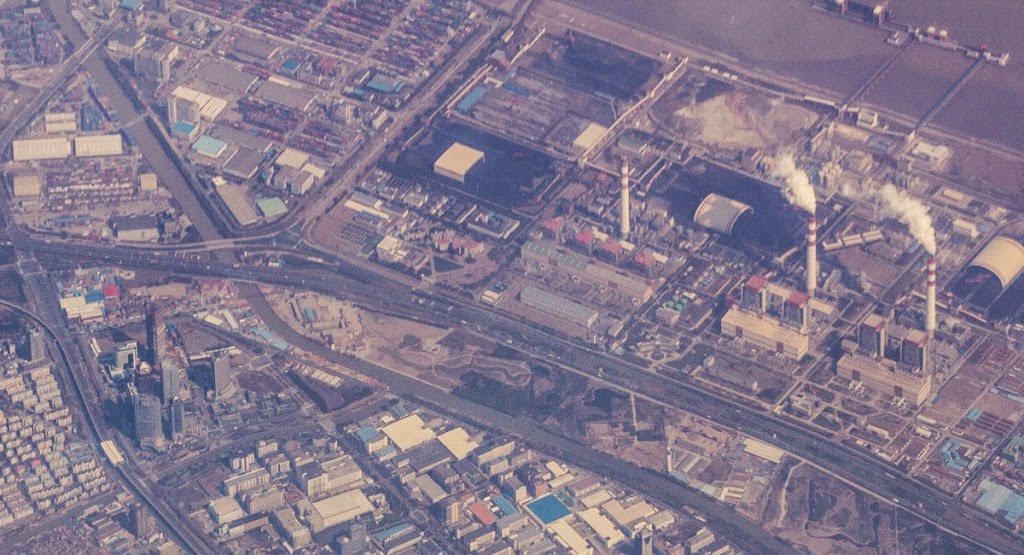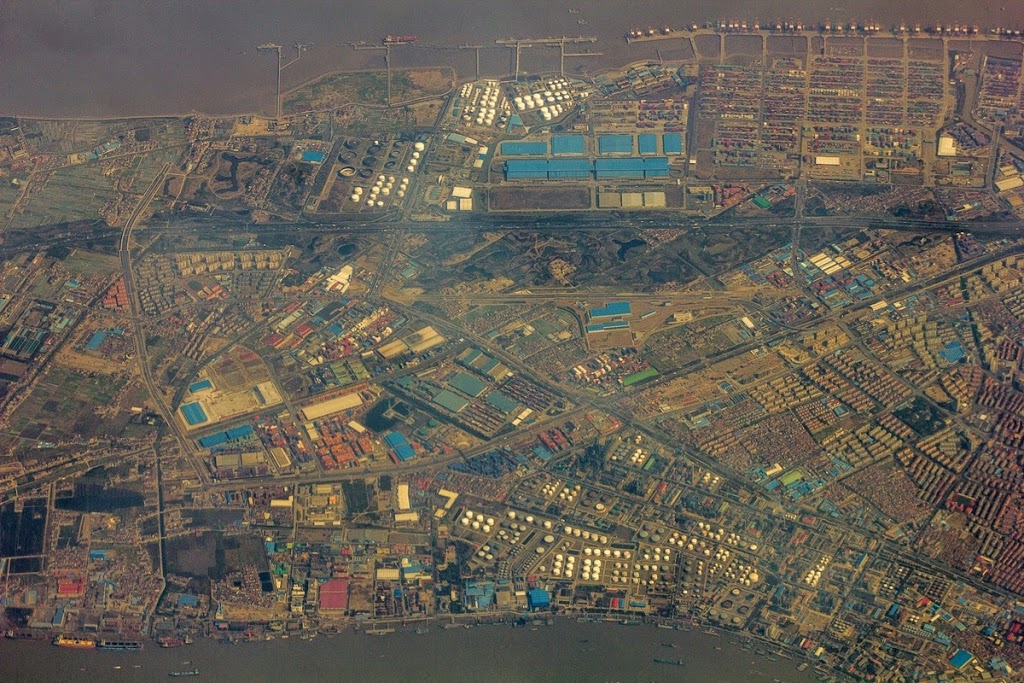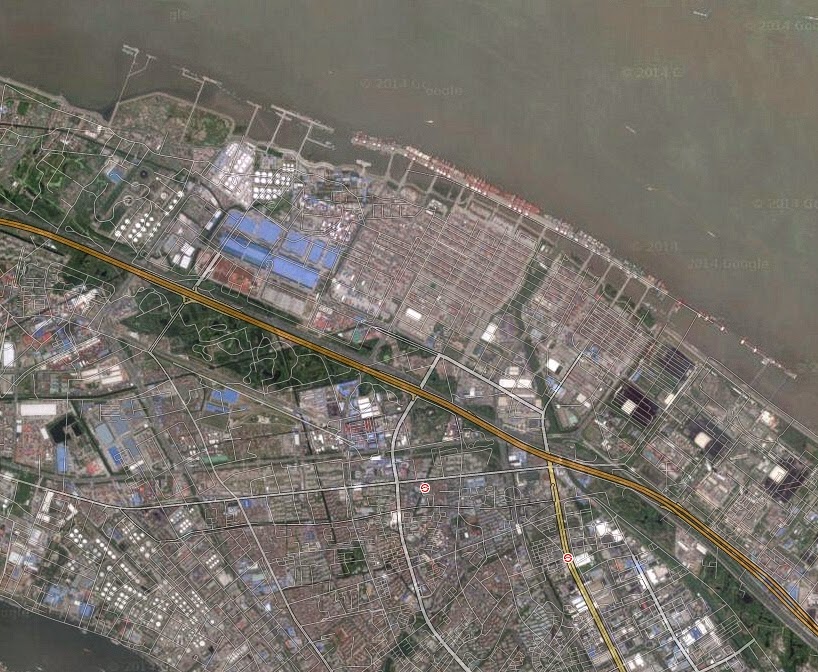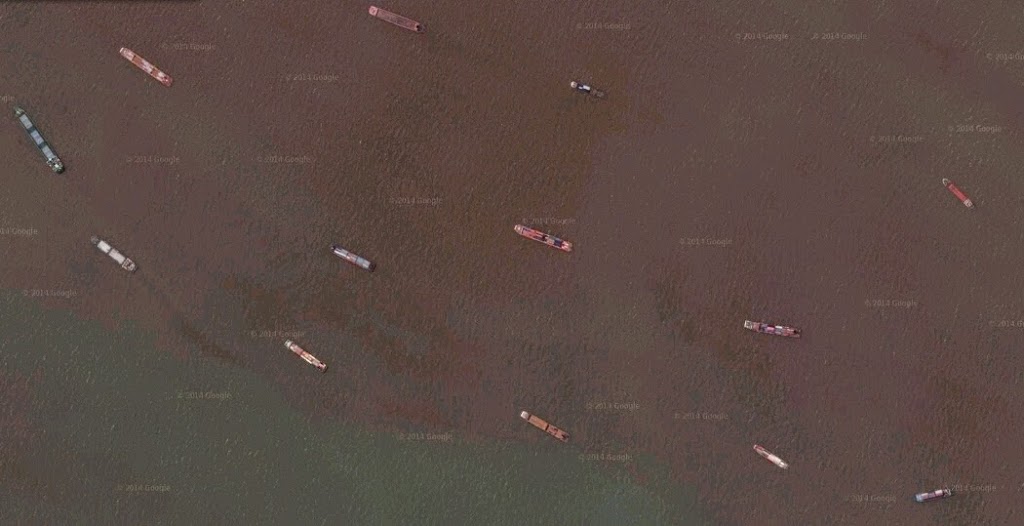Active Mind, Creative Spirit
Aerial Views of Shanghai and Stuff

Of all the places your stuff could be from, Shanghai ranks at the top. It’s the place where new things are packed into innumerable colored boxes bigger than your living room. Those suburban living room sized boxes are stacked by the thousands like Legos and sent floating on the great blue, half way around the world to your local box store.
I am a Story of Stuff person. Meaning, I subscribe to the thoughts they promote about mass production and the way we buy things. You should definitely watch the video above if you haven’t seen it, but I’ll Cliff Notes it for you as well: Make things better rather than make things more. You can’t make stuff (the stuff we buy, from running shoes to iPhones to TVs and party favors) the way we currently do and continue to survive on our Earth. It’s a linear system of production that relies on our planet’s resources too heavily to continue doing it indefinitely. We’ll mine, chop and harvest all our resources, leaving a barren, polluted world if we keep doing what we’re currently doing. So The Story of Stuff enlightens us to this and suggests that we buy less, buy smarter, reuse and quit thorwing things in the trash. Then be active about making manufacturers change the way they build things so we aren’t throwing out an iPhone every 13 months. Make things better rather than make things more. That’s the basic message. Because you’re wrecking the planet if you don’t. Ok, now back to photos of Shanghai and a few statistics that might explode your mind.
The first time I went to Nepal we flew over Shanghai just after sunrise. I wanted to see China from the air, specifically, the largest city in the world. Shanghai was estimated in 2013 to be just short of 24 million people. Population density of the city proper is 9,700 people per square mile (3,700 per square km). Kind of makes you wonder how many people would live in your house if it was in Shanghai, huh? The city proper contains more people than all of Taiwan. So while I didn’t know any of these numbers while I was flying over it, I knew it was huge, dense and intriguing. Why not see that with my own eyes, right? Here’s a photo I shot from 38,000 feet. [Click photos for larger view.]
Pretty stunning: a handful of towers on the lower left, factories on the right. Factories making stuff. My mind often thinks about what is being made in factories with white plumes coming out the stacks. I hope it’s really useful, reusable, green stuff, because while I’d like to believe that the photo quality is due to the airplane window, it’s more a result of the air quality. It’s seven miles of air we’re looking through here.
Here’s a photo I took a moment later of another section of Shanghai.
I was drawn to the colors (highly exaggerated here, they were pretty grayed out through the smog) and shapes, particularly the oil refineries – one on each river inlet – and the row of freighter docks in the upper right. There’s a park, too, and blocks and blocks of highrise dwellings. I studied the details of this photo for a while once I brought it home.
Tonight while I was perusing my old photos I ran across these pictures again and I wondered if this section of Shanghai was identifiable enough that I could find it on a map. Google Earth didn’t let me down. I found it immediately – the same section of the city that I’d photographed four years before.
The oil refineries made it easy (lower left and upper left). Then I noticed the water. Look what’s in the water in the upper right. Freighters. In this little clip below…
I counted 13 freighters in this little rectangle of water that Google captured. So I began to wonder about China exports and I looked up some numbers. Scale quickly becomes unimaginable, but I like to ponder my place in the world and the creation of stuff, so follow with me while I wrap my head around the scale of shipping in Shanghai…
Imagine for a minute a single box of size 8 shoes, fresh out of one of those factories in the first photo. It sits on a pallet, shrinkwrapped with stacks 10 boxes high by 10 wide by 10 deep of its identical neighbors. That’s one pallet of 1000 pairs of shoes. Now load the pallets a couple high and a couple wide in a cargo shipping container twenty feet long. You’ve probably seen these metal boxes even if you don’t live in a port city. They are the universal unit that massive quantities of stuff is shipped in. This metal box is known in the cargo industry as one TEU (twenty-foot equivalent unit).
Now stack 10,000 to 18,000 TEU on a single cargo ship and push it into the Pacific, bound for the USA. Imagine all the stuff that lives in just one of those boxes, or just one of those ships. Seattle accepted 900,000 TEU in 2010 and shipped out just over half that number. (LA received almost 4 million TEU in 2010 and exported just short of 2 million.) Shanghai became the first port to ship out over 30 million TEU, which it first did in 2011. Singapore is a half million TEU behind, in second place.
If you want more statistics, there are about 17 million container boxes in the world and five to six million are in transit at any time. I get stuck on little things sometimes, so I also thought, if Seattle, LA and the rest of American ports accept twice as many full containers as they send (because we are the best. consumers. ever.), then we ship out half a million empty containers every year out of Seattle alone. Sending boats around the planet with nothing in them? What a waste!
But wait! (Insert 2 am tv sales voice here.) There’s more waste! Also, 90% of the world’s goods are transported by ship and about 10,000 container boxes are lost at sea and according to this article, occasionally one of these lost containers has toxic chemicals (pesticides, industrial cleaners) end up in the world’s oceans and poison the fish you probably eat. And so, as I think through statistics, which are way more interesting to me than RBIs and OBP (due respect to baseball) I wish for less stuff. I hope you do too.
I still like the view of Shanghai from 37,000 feet, though and I hope to pass over it again some day soon. And I hope the air is cleaner next time. Until then, Here are my initial reflections of the first time I saw Asia from the air.


